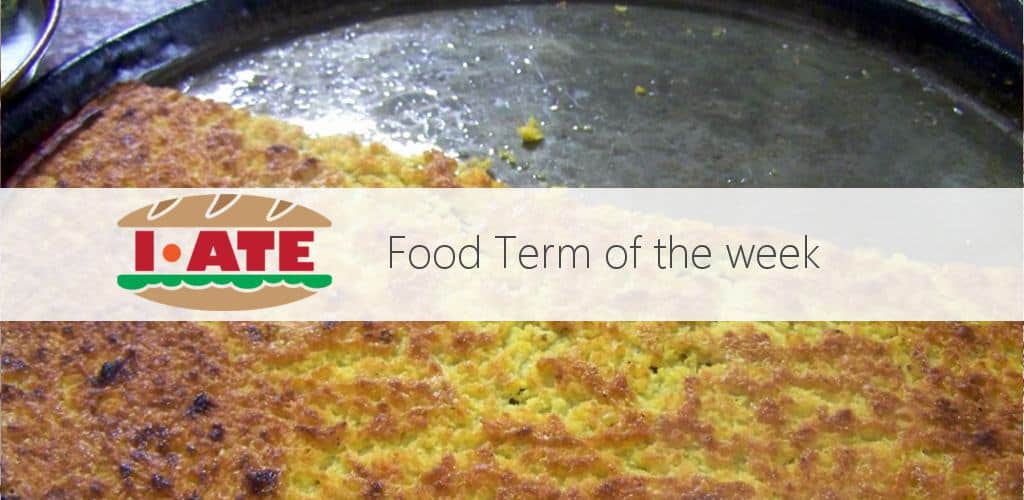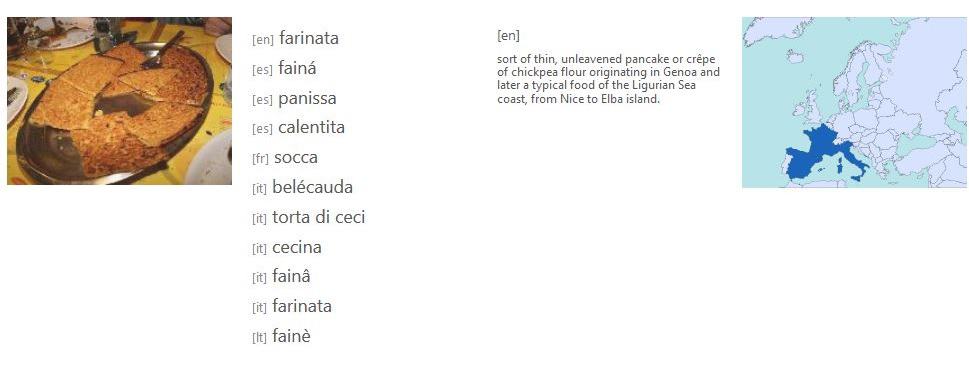Back in the 13th century, Pisa and Genoa were among the powerful Italian Maritime Republics, fighting for the control of the Mediterranean Sea. In 1284, the naval Battle of Meloria saw the defeat of Pisa at the hand of Genoese sailors. Legend has it that, on their return journey to Genoa, the Genoese ships were hit by a storm. The ships’ cargo of chickpea flour and olive oil was consequently overturned and soaked with salt water, creating a salty chickpea paste. The sailors’ supplies were limited and, when food ran out, they were forced to eat the paste. Some refused, however, and left it out on the deck exposed to the sun. The following day, the paste had become a more appealing sun-baked mixture, which was turned into a recipe by the sailors once they were back on dry land.

Today, this sort of thin and unleavened chickpea pancake is a typical street food both in some Italian regions and abroad. It goes by many names: farinata or fainâ in Liguria, cecina (from the Italian word for chickpea, ceci) in Pisa (Tuscany), torta di ceci (“chickpea pie”) in Livorno (Tuscany), fainè in Sardinia and belécauda in Piedmont. The dish was also introduced in the French region of Côte d’Azur, where it is called socca, and to Gibraltar, where it is considered a national dish and known as calentita (from the Spanish word caliente, “warm”) when it is baked or panissa when it is fried. In Uruguay and Argentina, where thousands of Italian people emigrated between the 19th and 20th century, it is called fainá. Every 27th August, Uruguay celebrates “el día del fainá”, “Fainá Day”.
Farinata is made by stirring chickpea flour into a mixture of water and olive oil, in order to form a loose batter. The mixture is then poured into a tin-plated copper baking-pan and baked for a few minutes, traditionally in an open wood-fired oven. Typically, farinata is cut into irregularly shaped triangular slices and eaten with optional black pepper. In Livorno, it is also served between two slices of bread or focaccia. In this case, it is called cinque e cinque, “five and five”, since originally the price was five lire for the torta di ceci and five lire for the bread. Usually farinata is eaten with no toppings, but in some versions, it is garnished with rosemary, artichoke, onion, aubergine or other spices and vegetables. In Argentina and Uruguay, it is eaten on top of pizza and is called pizza a caballo, “pizza on a horse”.”
Chickpeas, farinata’s main ingredient, have always been widely used in the Mediterranean diet. In Spain, for instance, garbanzos (the Spanish word for chickpeas) feature in several delicious recipes, such as the cocido madrileño, a traditional chickpea-based stew from Madrid. The word is also present in various sayings, such as ganarse/buscarse los garbanzos (“to earn one’s living”), and proverbs, such as no hay olla sin ningún garbanzo negro (“to be the black sheep”). Finally, chickpeas are consumed in large quantities also in North Africa, India and the Middle East, for instance to make hummus (a creamy dip made from cooked, mashed chickpeas) and falafel (a deep fried ball or patty), two exquisite dishes which are nowadays common all over the world.

Go to I·ATE
Written by Arianna Zanghi
Trainee at the Italian Unit of the European Parliament
